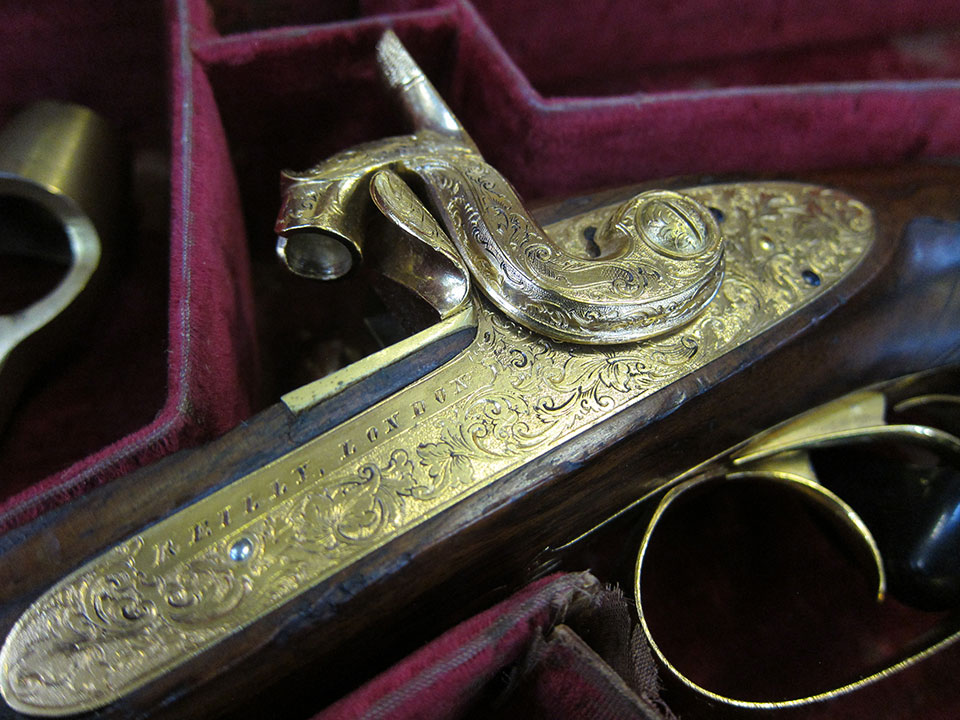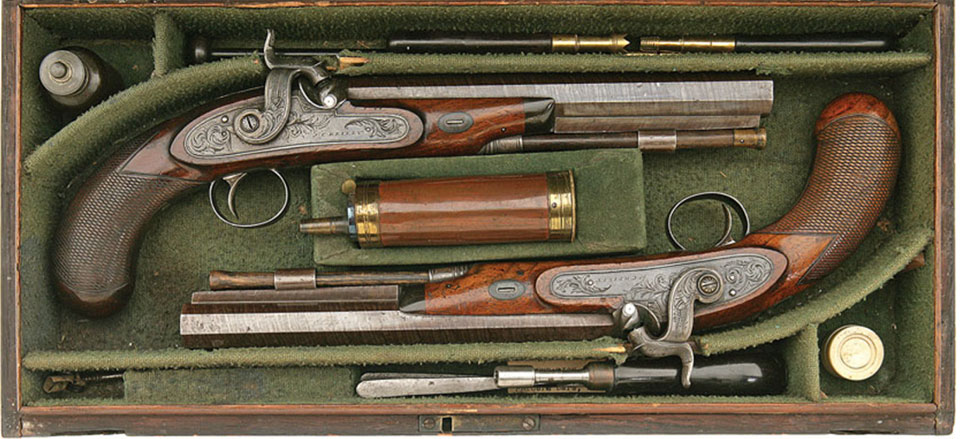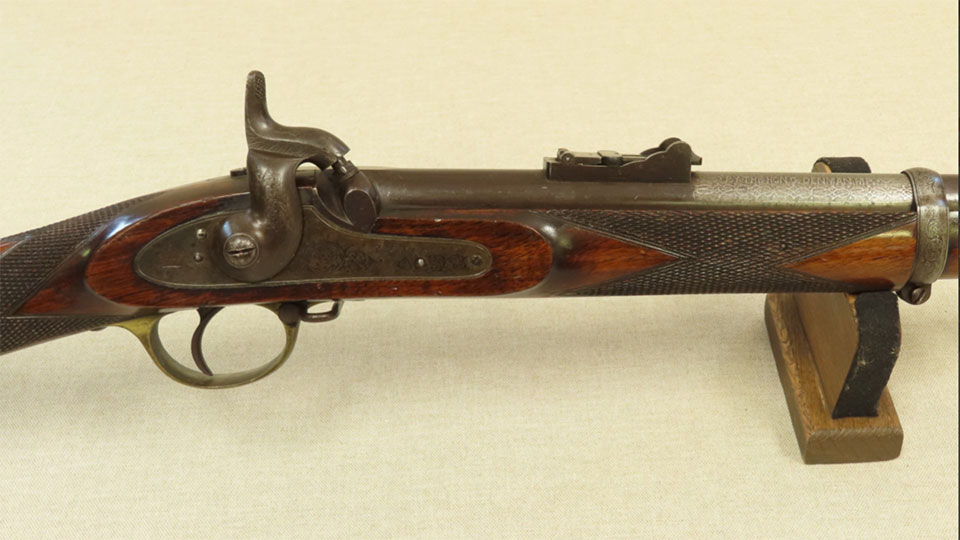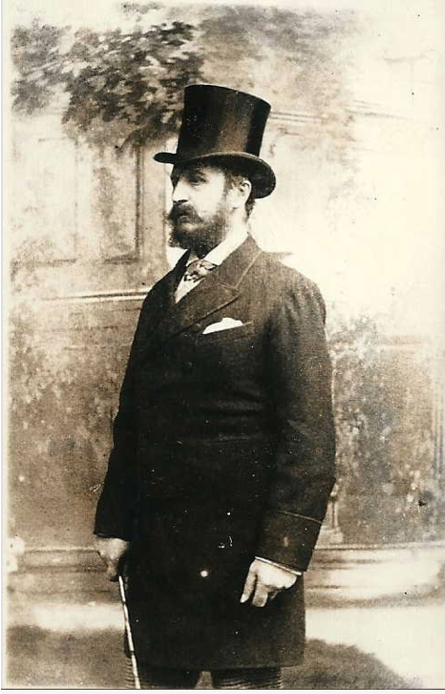Joseph Charles Reilly was born in Ireland in 1786.
He hailed from a well-to-do family and aspired to become a lawyer. In the mid-1800's he went to London and around this time numbered his first Reilly built gun which may have been 001, though many gun makers started their books with a higher number.
The oldest known extant Reilly is SN 162. His guns during this period often displayed the address “Holborn Bars.” The serial numbered guns included pistols, rifles and shotguns.
JC Reilly adopted a business model which did not change during the life of the firm: i.e. provide a quality hand-made product for a moderate price and deliver it rapidly. With this model he undercut more expensive and better known makers and made his profit on volume.
Reilly dealt in used guns taken in trade and sold guns under license. However he did not serial number the guns he did not build and he numbered his guns consecutively for 90 years, with certain exceptions around the time of the move to New Oxford Street in 1847.
Reilly had extensive finishing facilities in his large London buildings and may have stockpiled actions and barrel blanks imported in the white from Birmingham to allow him to meet orders faster than his competitors.
By 1833 all references to “jeweller” or "silver-plate" vanished from his advertisements and from that time forward he identified himself solely as “Gun-Maker.” (The first advertisement so far found with "Gun-Maker" appeared in 1831).
In August 1835 J.C. Reilly with E.M. as an apprentice moved to 316 High Holborn. The first serial numbered extant gun with the High Holborn address is SN 1024. By circa 1837 pistols were no longer numbered in the Reilly chronological numbering system; His serial numbered guns seemed to be limited to bespoke long-guns made to order.
In August 1840 the firm’s advertising style changed from J.C. Reilly to just “Reilly” which may mark the advent of 23-year-old E.M. as a full partner in the company. The style on the gun’s ribs continued to be “J.C. Reilly" or "Joseph Charles Reilly.” Case/Trade labels were styled like an embossed business card with "Joseph Charles Reilly," "Gun Maker," and the High Holborn address.

J.C. Reilly, during this period, also became known for his air cane guns. Young E.M. was billed as the expert and was so mentioned In advertisements, identified as “Reilly Junr." In 1847 or early 1848 E.M. wrote a widely disseminated pamphlet on air guns (mostly an advertising brochure highlighting the company's ability to produce all sorts of air-guns and parts) which is cited to this day. The pamphlet title page noted the author was "Reilly junr," and used the 502 New Oxford Street address and included "removed from Holborn."
In late March 1847 Reilly moved to 502 New Oxford Street, a large building In the "Elizabethan" area. The last extant guns with High Holborn on the ribs are 3392 and 3402. At this point the main serial number chronology for Reilly long-guns jumped up 5000 numbers to begin anew at around 8400 probably with production supervised by E.M. Reilly.
The name on the ribs was styled “Reilly.” (And with this move, Reilly demonstrated another trait of his business acumen, i.e. "Location." He always chose prestigious, high-traffic locations for his stores.)
The first extant SN’d gun with "Reilly," and 502 New Oxford Street on the rib is SN 8463; the label notes the firm had “removed from Holborn." (There is a SN 8578 with J.C. Reilly, 502 New Oxford Street on the rib with an apparently original case label with Joseph Charles Reilly, the Oxford St. address and "removed from Holborn," possibly one of the last such guns in the new 8400 series.)
Soon after the move, the trade label changed to "Reilly, Gun Maker," and was shaped with scalloped corners and featured a sketch of the estimated 20,000 sq foot building at 502 New Oxford Street.
Note: From 1847 to 1859 long guns and hand guns can be found with “Edward M.” Or “Edward Michael” on their ribs; however, if they do not have a Reilly chronology SN, these were not built by Reilly - they were only engraved and marketed.
Around the time of this move and the change in the main serial number chronology, J.C. Reilly appears to have kept a series of numbers for himself beginning around SN 7000 and ending around 8100 when he retired in 1857. J.C. Reilly often (but not always) put his full name or initials on the ribs of these serial numbers per his 27+ year tradition but with the 502 New Oxford Street address; yet the trade/case labels with "Reilly" as the firm's name and the advertisements/publicity remained the same for both number series.
J.C. Reilly appears to have kept a series of numbers for himself beginning around SN 7000 and ending around 8100 when he retired in 1857.
The first extant SN’d gun in the J.C. “7000” series is 7201 (a SN 7021 exists but with the High Holborn address possibly indicating the Reillys split their numbering system a bit before the move to 502 New Oxford Street); the last (no doubt made in 1857) is 8052.
There is one outlier, S.N 3514, with "Reilly" and the New Oxford Street address on the rib, apparently made (per the trade label in the case) after 1855, a number which harkens back to High Holborn, illustrating the sometime quirkiness of J.C. Reilly.
Reilly exhibited at the 1851 Crystal Palace International Exposition (as Edward M. Reilly) were he was much taken by the Casimir Lefaucheaux breech-loading pinfire guns. 
Reilly, Lang and Blanch became the major advocates for this new type of gun in England. Advertisements show that Reilly had a 300 yard shooting range near his London establishment located off Wood Land, Shepard's Bush.
Reilly also exhibited at the 1855 Paris Universelle Exposition, where he received much acclaim and "many orders were booked." The exhibit was in the name of E.M Reilly; however, advertisements make clear that though E.M. won the medals, the firm was still "Reilly, Gun Maker." Reilly case labels changed after 1855 to illustrate the 1851 and 1855 medals and to highlight “Fusils a Bascule” (French for breech-loading guns) and other breech loaders such as Prince Patent guns which he marketed and promoted.
In September 1857 J.C. Reilly retired to his country estate at Bourn End, Cranfield, Bedfordshire, where he died a wealthy man in January 1864; his last guns in the "7000" series were engraved with Caesar's words "Veni, Vidi, Vici" possibly as the swan song story of his life. "Formerly Gun-Maker, London" is chiseled on his tombstone.
In January 1859 with new partners (unknown) E.M. opened a branch store in a large building at 315 Oxford Street, early on also referred to as "the Armoury House" (Salvation Army hall was located behind the building), which had a 50 yard shooting gallery.
The company may have used "Reilly & Co." for a short while in Spring-Summer 1859. However, by October 1859 the company’s name had changed to E.M. Reilly & Co, a name which continued in use until bankruptcy in 1918 and beyond when the name was bought by Charles Riggs. His labels changed to reflect the new name, "E.M. Reilly, Gun Maker." The first extant serial numbered gun with E.M. Reilly on the rib is SN 11227. 
A year later In circa August 1860 the company's description on labels and in advertisements changed from “Gun Maker” to “Gun Manufacturers” and at that time the sketch of 502 New Oxford Street was dropped from his case labels. The basic format for the new label remained consistent for the next 30+ years with variations (additions of medals, branch addresses, occasionally mention of royalty, etc.) (There were a few outlier labels).
In 1862 Reilly showed at the London International exposition and won a medal for an exhibit which included a gold-washed 12 bore shotgun which may still exist (SN 12532).
Reilly showed at the London International exposition and won a medal for an exhibit which included a gold-washed 12 bore
From at least the 1840’s the Reilly’s tried mightily to win a lucrative military contract from the British government. J.C. Reilly exhibited brass mortars in 1845.
E.M. Reilly promoted the Prince patent breech loader in the late 1850’s. He worked with the Green brothers to win a contract for their patent breech loader, to which he had manufacturing rights, in the early 1860’s (competing against the Snider which won out).
He put forward the Comblain breech loader from Belgium, to which he gained patent rights in England, in 1868-70 (competing against trial guns such as the Martini and the Henry, a combination of which was adopted). And, he patented an explosive bullet in 1869, a sort of early M-79 idea. However, he never obtained a contract.
Reilly did sell and engrave British military guns - Enfields, Snider's, Martini's and later Lee-Speeds; He hawked these guns to the Yeomanry Volunteer Militia at wholesale prices, versions of them to Military personnel going abroad and to big-game hunters for 50 years. But, unless he built them himself he did not serial number these guns.
Next Month, Gene Williams continues his examination of E.M. Reilly, from his appearance at the Paris Exhibition of 1867 to the demise of the company, in the mid twentieth century. 
Published by Vintage Guns Ltd on




